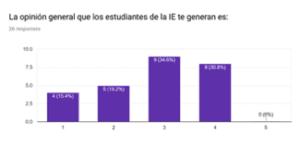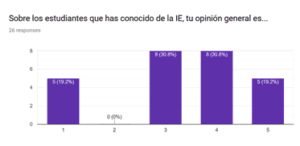Investigation and writing contributions done by Spotlight section editor Francia Morales.
SEGOVIA — IE students impact Segovia in two ways: economic well being and social/cultural health. As seen in the previous article, the IE community has a minimal effect on the Segovian economy, mostly limited to the housing market. However, consistent presence in the old town and late-night partying makes IE’s social impact on Segovia heavier. Through interviews with cab drivers, students from the University of Valladolid Segovia, Carrefour Express workers, and other locals, Spotlight gauged a few ways that IE students impact Segovia as a society.
Partying and Disruptiveness
For years, locals valued Segovia as a sleepy mountain town, away from the bustling metropolis of Madrid. In 2012 this completely changed, with the opening of IE Segovia bringing college students with no supervision to a formerly quiet town. Many times, when IE students walk home from Irish or host a pre-party beforehand, forgetting that the outside world exists. Many Segovians feel disgruntled by such late-night disruptions, and Spotlight’s interviews with Segovia locals reflected this sentiment.
“They are honestly very disruptive in the middle of the night with loud music and people screaming at the top of their lungs,” said one local Segovian sitting in Plaza.
“The only thing that I can say,” exclaimed another local, “is that there is a lot of disruption in the streets around my house whenever it’s party night.”
Our pre-parties also give locals a very bad impression of IE students. “I don’t really interact with IE students on a regular basis,” says one local, “I do however hear their very loud parties on Thursdays”. Apartment walls don’t block much noise, so the singing/screaming disturbs many residents attempting to sleep.
This discourteousness, however, stems from a larger theme: our attitude towards those living in Segovia.
Entitlement/Arrogance
It should not surprise anyone that IE students have a certain attitude towards life. When we saw the “IE Student Go Home” graffiti we did not reflect on ourselves, rather we expressed anger at the locals for not appreciating us. Many locals, especially those working in restaurants, grocery stores, and businesses recognize this attitude towards them.
“There is this very strange feeling of arrogance/entitlement whenever you guys buy something,” explained one local worker about her experience serving IE students.“It’s a lot of little things you guys do,” said another worker, “most of you guys don’t even acknowledge our existence whenever you are buying something.”
Another local described an “aura of superiority and negativity” surrounding IE students, as compared to “positive” tourists.
A local UVA student explained this concept well. IE students “do not identify with the social feeling of Segovia. Rather, they use it.”

While this issue is ours to fix, both us students and IE University itself could work to integrate students into the daily life of Segovia as well. Nearly 60% of IE students rate the university’s efforts to integrate us into Segovia a 5/10 or below. However, one-third of IE students would not attend events to integrate us into the community.
Many times, the IE community treats Segovia like an Airbnb. We come to University, go party every week, leaving a trail of shattered bottles and McDonald’s bags, and host pre-parties without regard to others. We walk around Segovia thinking of locals as people we’ll never see again. Then in June, we pack up with no respect for the consequences of our actions.
Going forward, we should live as if Segovia was home and those here our neighbors, not just another travel destination.
Student Culture
After the graffiti appeared in September, students formulated the popular theory that UVA students dislike IE students and vice versa. However, this theory does not hold up to anecdotal and qualitative data. The Spotlight team conducted surveys at UVA as well as local high schools to investigate the sentiments of fellow students. Our research concluded that while many UVA students hold negative opinions on IE students, these lay with people who have not met any IE students, and those who have interacted with IE students have a more positive opinion of us.

Of all UVA students, 35% have a negative view of IE students, and most know IE only through hearsay. This may reflect the existence of negative rumors about IE students.
However, when IE students and UVA students meet, many of the prejudices on both sides wash away to the fact that we have many things in common. 80% of UVA students who have met IE students have an average or positive view of them, and none said they have a bad relationship with an IE student.

“I have gone to basketball games, where those of IE behaved like gentlemen,” says one UVA basketball player “I have gone there and I have been welcome”.
Many also appreciate the diversity IE students bring to Segovia. “It attracts people from other countries” explains a UVA student. “It attracts people from other cultures,” comments another student, “visiting family and leaving money for the city”.
Additionally, UVA students universally want more connections between IE and UVA. 85% of them want IE and UVA students to meet more, the rest are indifferent to the idea. However, IE students do not reflect this sentiment. Only 36% of us would attend a mixed UVA-IE event, with another third indifferent to the idea. More integration into the student fabric of Segovia will take effort on our part.
Takeaways
From the Spotlight’s investigation into IE’s social impact on Segovia, there seem to be two differing opinions on IE students — one from older locals, and one from local students.
Older locals see IE students as generally condescending and disruptive during the night. When we shop, eat at restaurants, and walk around, we don’t acknowledge their existence, taking for granted those who make Segovia the town she is a day in and day out. Thursday night pre-parties and disruptiveness walking home from Irish disturbs locals trying to sleep. There is an article that looks further into this phenomenon by the local Segovia newspaper, El Dia de Segovia.
On the other hand, UVA students who interact with IE students see the community as friendly and welcoming, and most want more connections between IE and UVA. They appreciate the international atmosphere IE brings to Segovia and the revenue for businesses from visiting family and the students themselves.
To remedy the “IE Student” reputation with Segovians as a whole, we must interact with the community. Next time you visit the supermarket, ask how the cashier’s day is going. When riding in a taxi, strike up a conversation with the driver. Ridding this “aura of superiority” will show locals there’s more to us than Thursday night hooligans. Additionally, the Spotlight team proposes IE students and faculty should set up more cross-university connections with UVA. Creating a true pan-IE student community will help eliminate our stereotypes and bring Segovia as a whole closer together.
A special thank you to Amanda Matesanz and Elisa Martínez for the data used in the creation of this article






